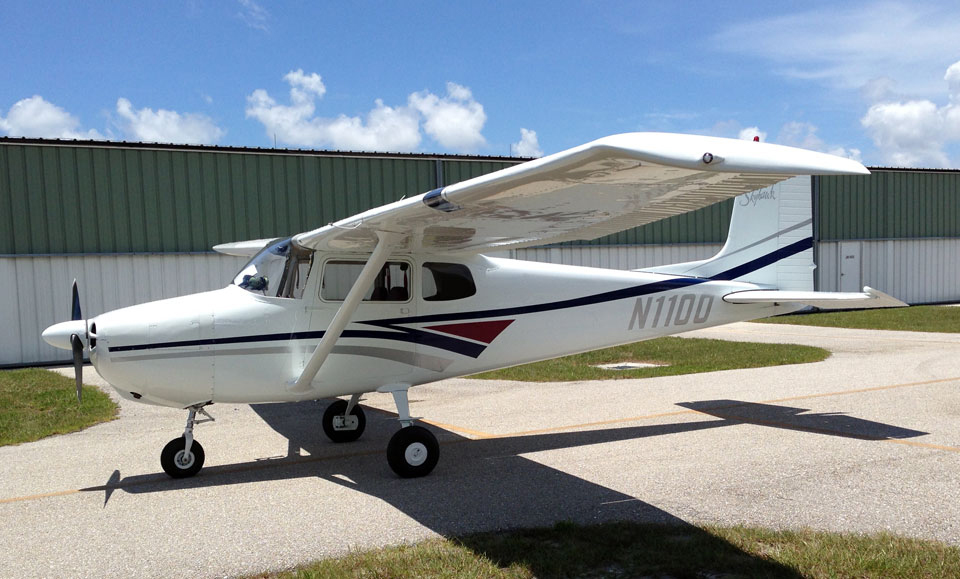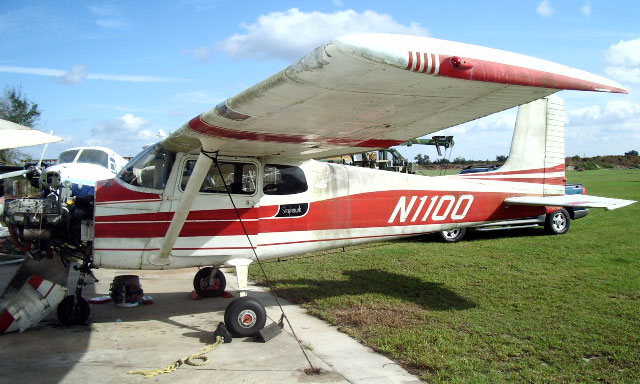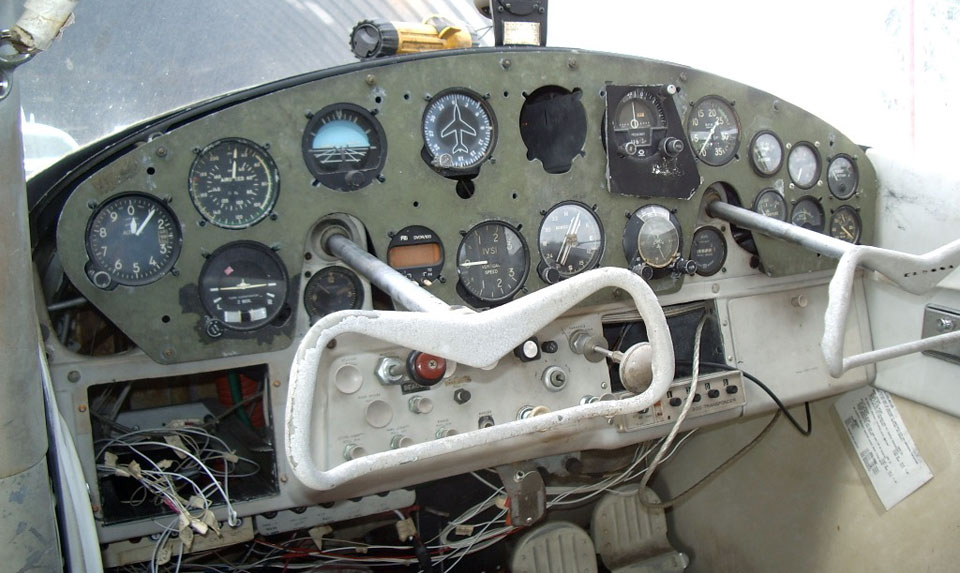Rescue Restoration
Florida Cessna 172
By Jim Faix, EAA 771267; Sarasota, Florida
April 7, 2016 - In 2010, I bought an old, worn-out 1956 Cessna 172 that was just about ready for the junkyard. I figured it would be great to have a plane that was the first year of that model. It would be like having a first year Corvette, or a first year Mustang.
Although it was in rough condition cosmetically, it was beautiful to me, and it was in a price range that I could afford and mostly complete. Knowing this was a “project plane,” we went over it pretty thoroughly and made several squawk sheets of the things it needed. Although it wasn’t flyable, I figured I would have it flying in a year, then two, then three, then four, then five.
For the first three years I worked on it Saturdays in the hot Florida sun. Everything made of rubber had to be replaced, some cables, lights, windshield, complete new interior, radios, and some other major components (read: wing, horizontal stabilizer, rudder). Stripping five layers of old paint jobs took a year all by itself. The outer most paint surface was as rough as 60-grit sandpaper.
I figured that working on it Saturdays only, my pace was severely hampered and I needed to step it up a bit and work on the major components at home. So, in year four, with the help of some friends and A&Ps, we took the airplane apart, loaded it onto two trailers, and towed it 50 miles to my home where work continued in my garage on some of the major components, with the fuselage sitting in the backyard. Fortunately, my home wasn’t in a deed-restricted neighborhood at that time. I called it “yard art,” but my neighbors were still not impressed.
In year five, I moved to a deed-restricted neighborhood. The fuselage couldn’t go with me, so I rented a hangar at Sarasota/Bradenton International Airport (SRQ). Since I only lived a mile and a half from the airport, I hooked up the tow bar to my Jeep and towed the center section down a back road late one rainy night and tucked it away in its new hangar in about 10 minutes’ time. I figured it was better to beg for forgiveness than ask for permission. Fortunately, we didn’t have any encounters with any vehicles equipped with blue flashing lights. I figured it would be okay since it technically was a registered vehicle. The wings and tail feathers followed a few weeks later.
At four years and seven months, I loaded the center section back onto the trailer again and towed it through downtown to a local body shop for its paint job. After the paint job, Screaming Aero Graphics of Ocala, Florida, applied the stripes and registration numbers. Three more months of re-assembly, had the annual conducted, and flew it for the first time. Wow, what a feeling of accomplishment! It flew straight and true with the ball centered.
The key to restoring a project plane is to make progress every time you touch the plane. Before you know it, it turns into measurable progress. Document everything in writing and take lots of photos. It helped to document my measurable progress and made a great EAA slideshow for my chapter. My motivation to finish this plane was the thought that if I didn’t, all I had was a pile of used airplane parts. It wasn’t an airplane until the paperwork said it was an airplane. There is an old saying: When the paperwork exceeds the gross weight of the airplane, it’s ready to fly.
I would like to thank my loving wife, Ursula, for tolerating my Saturday absences and for allowing me the freedom to follow my dream. In addition, I’ve had several A&P/IAs following my every move along this journey and they deserve my heartfelt thanks. George Lee, my IA from Jupiter, Florida, conducted the annual that made this pile of parts an airplane again. I can’t thank him enough for his guidance. Anyone thinking of restoring an old airplane should think about the time and money commitment needed to finish their project. Now my plane looks and flies like a new C-172, and I know every inch of this plane. I always draw a crowd everywhere I land. The Young Eagles I fly each month think it’s “awesome,” and so do I.
Share your craftsmanship with readers worldwide! Send us a photo and description of your project at editorial@eaa.org and we’ll consider using it in “What Our Members Are Building/Restoring.” Please include your name, address, and EAA number. We reserve the right to edit descriptions.



